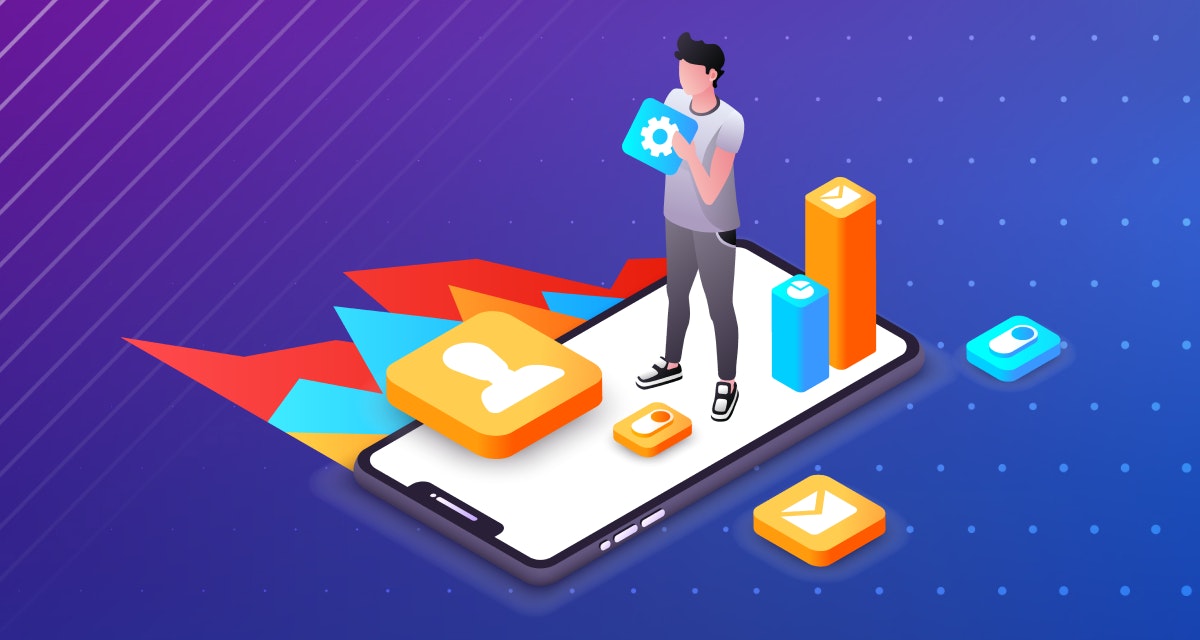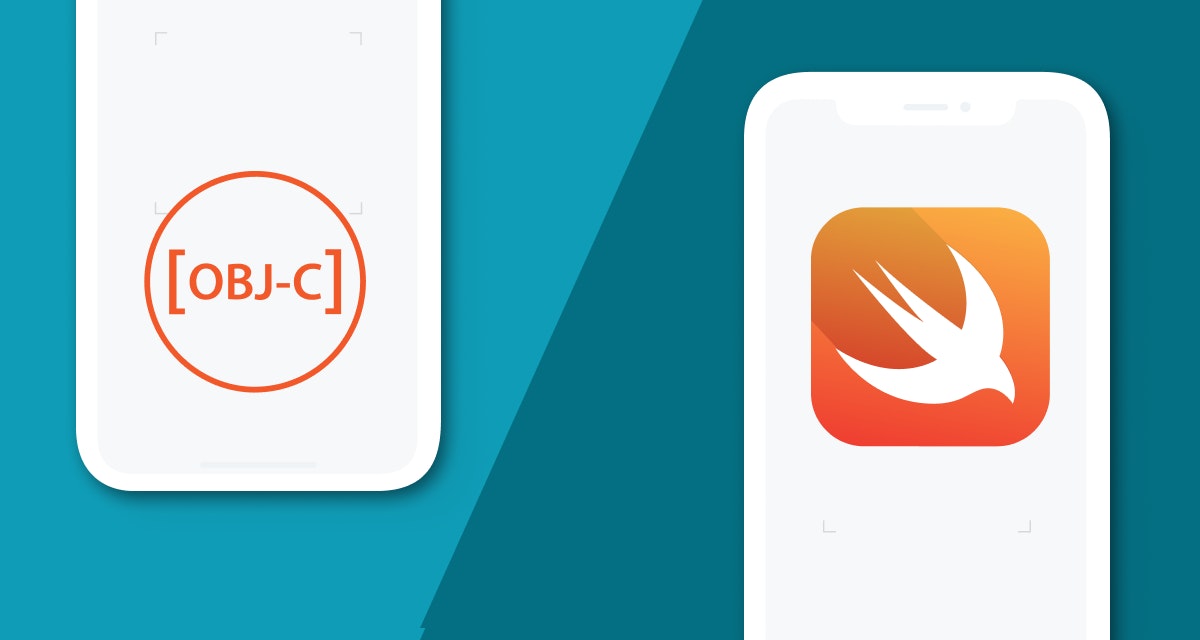The number of smartphone users worldwide will surpass 3.8 billion by 2023, with most of them belonging to China, India, and the US. Not surprisingly, mobile apps are expected to generate $935.2 billion in revenue via in-app advertising and app stores by the same year.
According to a Manifest survey, 51% of internet users open a mobile app up to 10X in a day. One thing is for sure mobile apps have gained much precedence in our daily lives in the past decade and for a good reason.
From shopping for clothes and groceries to booking cabs and movie tickets to answering emails and making to-do lists & there is an app for everything, and we use them all! Therefore, it is nothing new to see businesses from various domains turning towards mobile apps to spread brand awareness, engage customers, and increase mobile app conversions.
Unfortunately, despite the hard work that goes into developing apps, users abandon 80%-90% of mobile apps launched on app stores after using them. App development costs can run if care is not taken, so you must ensure the result is as per industry norms and customer expectations.
So, what can businesses do to develop an app that not only suits their needs without burning a hole in their pockets but also engages their target audience for the long haul?
It turns out there are several best practices for mobile app development that can stick to when creating robust and intuitive applications. This article attempts to explore those app development guidelines in detail. Let us begin:
What are mobile app conversions?
It refers to the number (or percentage) of the app store or site visitors who view your app listing and then download the app or make an in-app purchase after downloading and using the app for a specific period of time.
Calculating the app conversion rates is simple. You simply take the number of app installs, divide it by the total number of visitors and multiply it by 100.
The average conversion rate in the US on the Apple App Store and Google Play Store is 32.53% and 29.685. As per a Databox survey, the industry's average conversion rate falls between 1.6% to 2%.
Now that you have understood the basic, let us head to the main section of the article, i.e., discuss the curated list of 13 industry best practices for app development to have better conversions from your mobile app:
Here are 13 best app development practices for conversions
1. Market research is important
Market research is the first crucial step towards positioning a new business and its components in the market. Create a vision of your mobile app development process and objectives you wish to achieve for your business through it.
You will gain an overview of existing business models, insights into your offering's requirements, and a direction for developing your application. The research will also help you comprehend user demand and discover new opportunities in the market. This information will come in handy while formulating agile app development strategies.
2. Keep an eye on competitor's app development practices
Conduct rigorous competitor analysis to know what your prospects are using. List down the strengths and weaknesses of your competitor's application. It will help you figure out the improvements you need to make and identify areas to up your game.
You need to study their app development model, technology, and workflow. Since your target audience is similar, try offering a user experience similar to what they are already habituated to.
Brainstorm to improve on all positives of the competitor app designs and identify how they strive to address their customers' pain points.
In-depth research of user requirements and comparative study of competitors will allow you to develop an app that is a notch higher than theirs. They are two of the best ways to develop mobile apps for conversions.
3. Identify the user personas
Focus on personalization is a must for every new business, as 90% of marketing leaders accept it as a profitability contributor.
Discover your target audience and search for things they are missing out on with existing applications. But do not stop here. Instead, segment your audience and identify the user personas you intend to serve.
Different prospects have different needs, so you must research their preferences. Study their behaviour and use the findings to strategize an effective User Interface (UI) and User Experience (UX) application.
Always remember: consumers typically appreciate when you pay attention to details and incorporate customizations. That convinces them to continue engaging with you for longer.
4. Understand the design concepts
Use all the information collected through competitor analysis and customer research to design your mobile application's UI. Every visual element to be used on your app is crucial, so pick it wisely. Work closely with your app designer to get the perfect result.
Consider a functional theme and maintain consistency throughout the app for a smooth design. All images, screens, pages, backgrounds, spaces, typography, buttons, and every other user interaction point within your app should be schematic for visual design.
Remember, an ideal app design should be intuitive, communicative, flexible, and non-distracting. You must keep the elements minimal without dropping out essential features and be ready for an upgrade as required.
5. Build your app UX strategically
In this day and age, the experience is everything. Hence, strive for a seamless and glitch-free UX on your mobile app. The negative indicators from your competitor analysis should be addressed while designing the UX of your application.
Build a comprehensive Information Architecture (IA) to tackle user behaviour changes through multiple processes. Create experience maps to study user behaviour and change patterns. Develop user flows to understand how users will interact with the app's elements throughout the product lifetime and their journey with your business.
6. Choose the right technology and platforms
To build a robust application, you must select the technology stack wisely. Review your competitor analysis to find out the technology and platform being used by them. Review the complexity, size, and budget for your application to adopt the best appropriate technological tools.
Avoid copying your competitors or any other trends and work with the most scalable options. You will have to decide whether you need a native app, a web app, or a hybrid app , depending on your user preferences.
You can build apps for Apple iOS, Android, or Windows devices or best, all three. Your application may be used by a wide variety of mobile devices other than just smartphones. You must ensure it works seamlessly on tablets and wearable tech gear.
7. Add push notification feature for personalization
To stand out in the swarm of mobile apps, you must leverage the personalization strategy instead of sticking to a one-size-fits-all approach. According to an Upland Localytics survey, 53.5% of users think push notifications are useful as they alert them about interesting stuff or valuable information on their hand-held devices.
Push is handy in industries such as eCommerce, media and publishing, BFSI, digital marketing, and eLearning, according to VWO.
You can quickly personalize your push notification for them using placeholder tags and rich media. To comply with GDPR and personalization best practices, ensure you capture only essential customer data such as first name and email ID.
It will ensure your target audience is not annoyed with irrelevant notifications and would not breach their data.
Related Blog: Best push notification tools to monetize your mobile app
8. Implement smart app onboarding
A flawless user onboarding flow is necessary to avoid early abandonment. Good onboarding involves educating users on app usage while indicating the value your application offers. The key is to ask for only essential personal details and permissions.
As per a Clutch study, 82% of users need sincere reasons behind app information requests. For an efficient onboarding procedure, you must capture data that is mandatory for users to experience the app while allowing them to skip the rest.
Seeking user permission for device data access and push notifications boosts opt-in rates. You can also offer users value in feature carousels, in-app walkthroughs, and incentives like reward points or discount codes.
9. Include gamification features to engage more users
Once your feature-rich and robust application is ready, you can take the user experience a notch higher with gamification. It boosts engagement by offering a sense of achievement to the users.
You can earn their loyalty as you offer them recognition and satisfy their motivational needs. You can introduce gamification in your app through in-app elements like rewards, quizzes, virtual goods, leaderboards, and badges.
These also increase shareability on social media and referrals among user circles. Your brand will get the much-needed online push it needs organically. So, make sure you do not ignore this.
10. Avoid intrusive ads
Interstitial ads are a great way to monetize your application. But they could appear to be misleading and annoying to your target audience. Intrusive in-app advertisements may render a poor user experience forcing the user to abandon the app.
Ideally, you must avoid incorporating intrusive ads in your application. If you opt for them for monetary purposes, you must follow the best practices laid down by Google. You must mention details of in-app advertisements near the install button on the Google Play Store.
Ensure all advertisements adhere to age restrictions the same as that of the audience of your app. The advertisements must not cover the app's entire interface and should come with an option to dismiss or skip them without penalty.
In a non-adherence to these guidelines, users can report your app, and it would be taken down from Play Store.
11. Resolve app loading issues
App loading time drives user retention. As the competition continues to increase in the app marketplace, sluggish apps have the least chance to make it to the user's preference lists.
You can use a Content Delivery Network (CDN), optimize images, and deactivate inappropriate plugins to improve app loading speed.
Your goal should be to adjust your mobile application's loading time according to the user's attention spans. Optimal loading speed boosts conversions and reduces bounce rates.
12. Security is not optional
Strengthening mobile app security is of paramount importance to secure your internal data along with crucial customer information. A high-quality security code protects your mobile app against threats.
Avoid using malicious codes sourced from third-party libraries and implement authorized APIs through a centralized authority. Opting for high-level user authentication keeps hackers at bay. Your target audience should not be afraid of using the app!
13. Debugging and testing are mandatory
Testing and debugging the mobile application before launching it helps you check its performance. This step encompasses assessing the performance of the app and its compatibility with the existing infrastructure.
Conduct manual and scripted testing to ensure the app fares well against all parameters such as user-friendly interface, ease of operation, and optimal load speed. You can launch the app in the beta version and let users download and use the app.
Monkey testing detects bugs and examines the app for stress and loading speeds. It is advisable to update the app before launching in case bugs, or crashes are detected. So, make sure you do not waste time in doing so, and take help from any app development companies for the same.
Summing it up
Mobile apps have become an essential part of the digital marketing strategy of every business. From gaining customer loyalty to improving brand recognition, an app plays a significant role in driving conversions. Adopting applications makes your business customer-centric and future-ready. It is not something you can ignore anymore.
The exponential increase in the popularity of smart devices has boosted the app development industry. The global mobile app development market estimates a growth rate of over 14% from 2016 to 2022.
Powered by the IoT market's growth, mobile apps transform into tools for collecting information to support automation and access features of connected devices.
Artificial Intelligence and Machine Learning are enhancing their performance. Looking at the upcoming industry trends, we can predict that mobile apps are inching towards complexity to make our lives easier and better.
If you want to develop an app that guarantees conversions, talk to us! .Our mobile app developers are competent, up-to-date, and experienced in creating apps for different niches. Our app development services are designed for success (and conversions).





